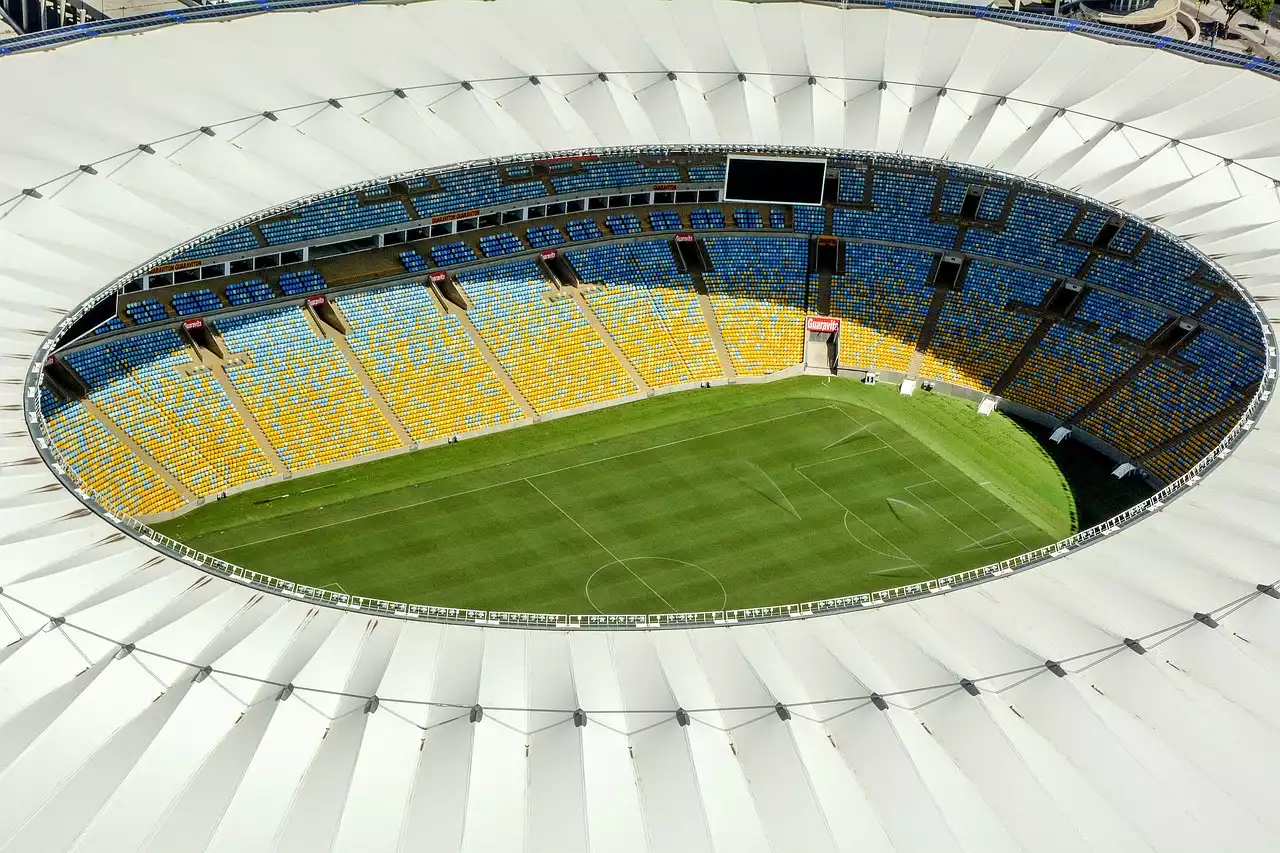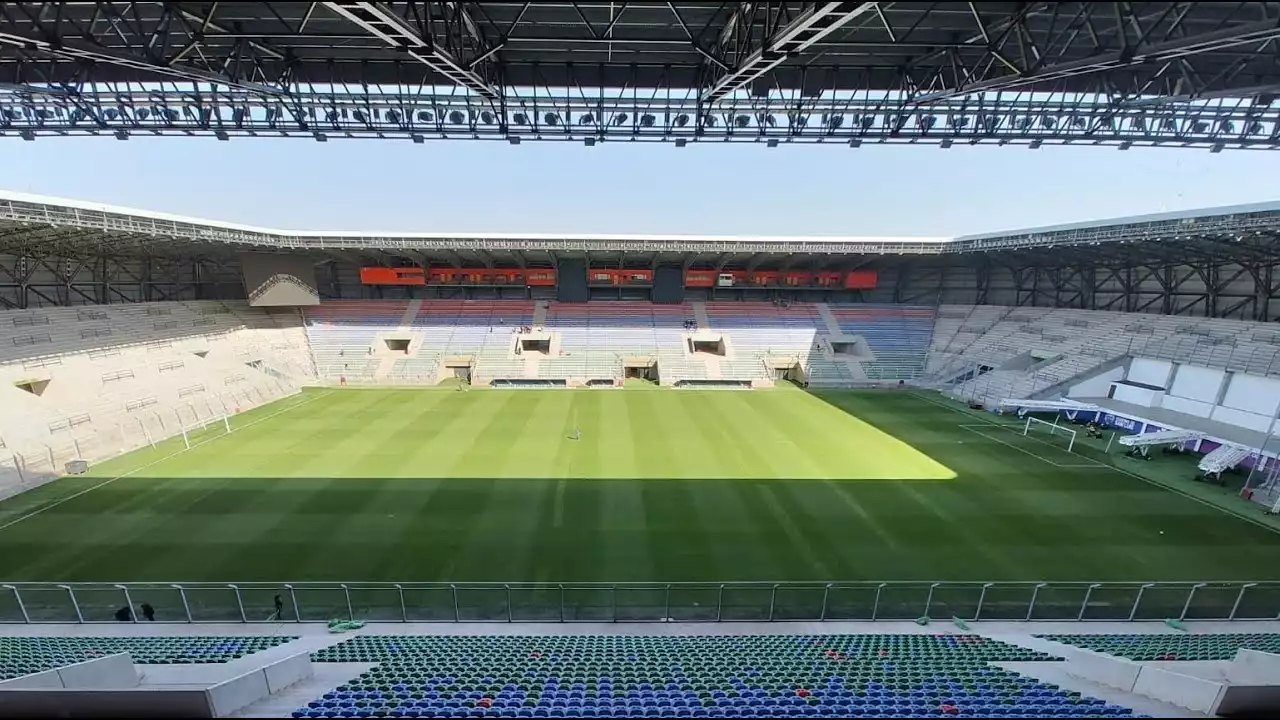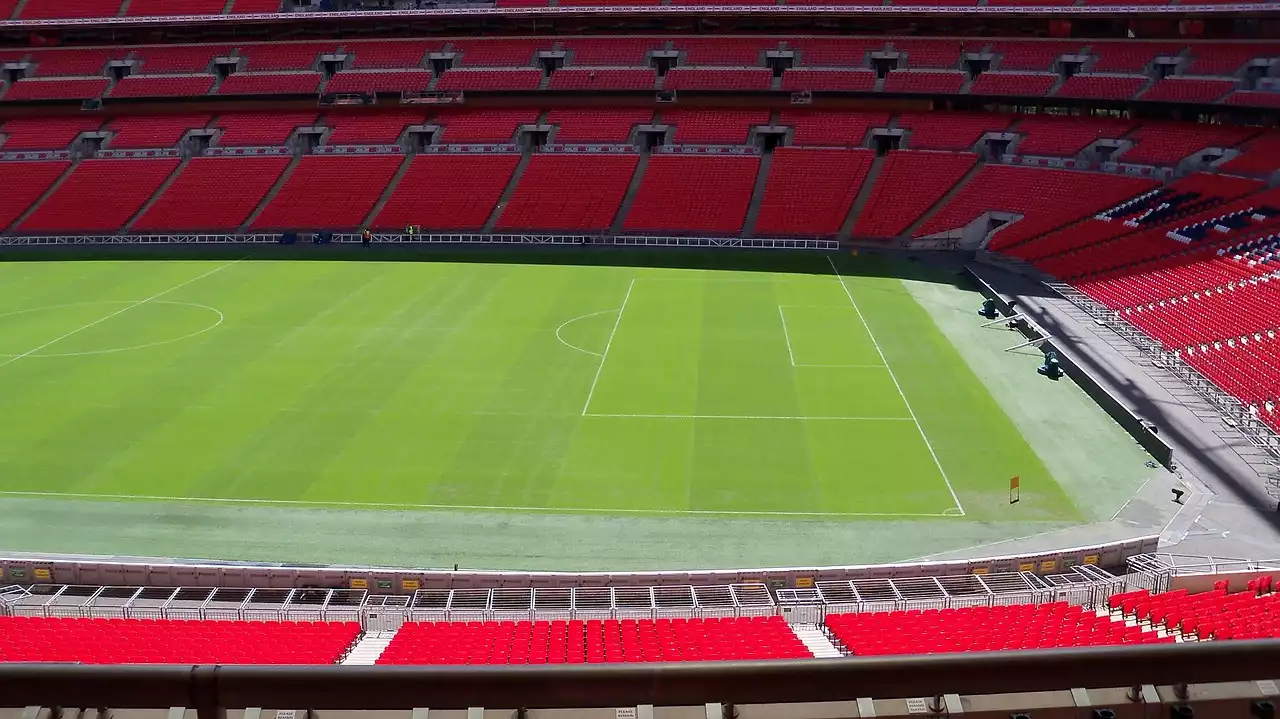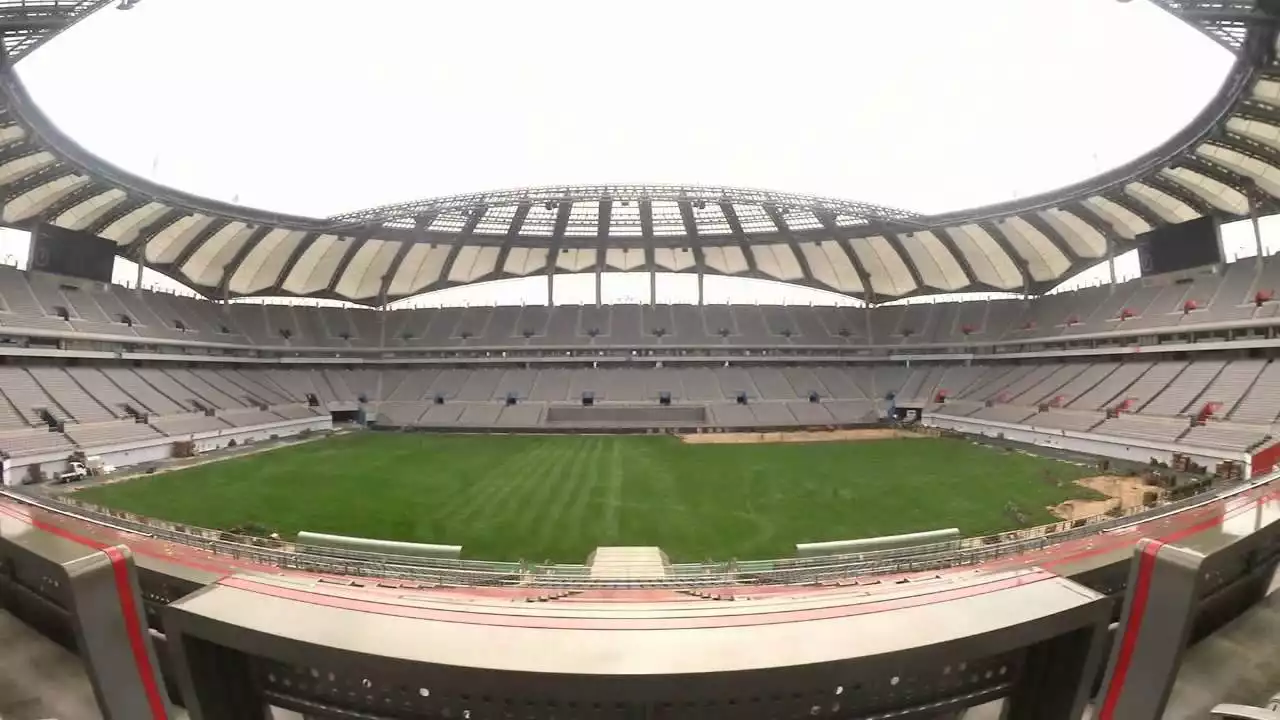Importance of stadiums and venues in soccer tournaments
Stadiums and venues play a crucial role in soccer tournaments. They are not just places where matches are held, but they are the beating hearts of the game. These iconic structures become symbols of national pride, representing the host country's love for the sport and its rich footballing history. They embody the passion of the fans, the skill of the players, and the thrill of the competition.
The atmosphere inside a stadium during a FIFA U-20 World Cup match is electric. The roar of the crowd, the chants and songs, and the palpable excitement create an unforgettable experience for both players and spectators. These stadiums become cauldrons of emotion, where every goal, save, and tackle is met with a wave of cheers or groans. They provide the perfect backdrop for the drama and intensity that unfolds on the pitch.
Moreover, these venues serve as a stage for young talents to showcase their skills and make a name for themselves. The FIFA U-20 World Cup is a platform for the future stars of the game, and the stadiums play a crucial role in shaping their journey. The memories created in these stadiums will stay with the players throughout their careers, as they look back on the moments that propelled them to greatness.
The choice of stadium and venue for a soccer tournament is not just based on infrastructure and capacity. It is about finding a place that can capture the essence of the game, that can provide an atmosphere that transcends the boundaries of sport, and that can create memories that last a lifetime. The 5 stadiums and venues we are about to explore have achieved just that.
Maracanã Stadium - Rio de Janeiro, Brazil
The Maracanã Stadium, located in Rio de Janeiro, Brazil, is undoubtedly one of the most iconic football stadiums in the world. It has a rich history and has witnessed countless historic matches, including the FIFA World Cup finals in 1950 and 2014. With a seating capacity of over 78,000, it is the largest stadium in Brazil and has become a symbol of the country's passion for football.
The Maracanã Stadium's architecture is awe-inspiring, with its imposing concrete structure and iconic circular shape. The stadium underwent extensive renovations for the 2014 FIFA World Cup, ensuring that it remained a world-class venue for football matches. The atmosphere inside the Maracanã is truly unique, with fans known for their vibrant cheers, colorful displays, and passionate support for their teams.
The stadium's history is filled with unforgettable moments. From Pelé's 1000th career goal to Zinedine Zidane's famous headbutt in the 2006 FIFA World Cup final, the Maracanã has been witness to some of the game's most iconic moments. The legacy of the stadium extends beyond football, with legendary musicians such as Frank Sinatra and Madonna performing memorable concerts within its walls.
The Maracanã Stadium's contribution to the FIFA U-20 World Cup is equally significant. Hosting matches in both 1985 and 2014, it provided a platform for young talents to shine on the global stage. The stadium's rich history and electric atmosphere added an extra layer of excitement to the tournament, creating an unforgettable experience for players and fans alike.
Soccer City Stadium - Johannesburg, South Africa
The Soccer City Stadium, located in Johannesburg, South Africa, was the centerpiece of the 2010 FIFA World Cup. With its distinctive design resembling an African pot, the stadium stands as a testament to South Africa's rich cultural heritage and its love for the beautiful game. The stadium, also known as FNB Stadium, has a seating capacity of over 94,000, making it the largest stadium in Africa.
Soccer City Stadium holds a special place in football history as the venue for the 2010 FIFA World Cup final between Spain and the Netherlands. The match showcased the stadium's grandeur and provided a fitting stage for Spain's triumph. The vibrant atmosphere, with the sound of vuvuzelas filling the air, added to the spectacle and made the occasion truly memorable.
The stadium's impact extends beyond the World Cup. It has become a symbol of unity and reconciliation in South Africa, playing a crucial role in the country's history. In 1990, Nelson Mandela made his first public speech after his release from prison at Soccer City Stadium. The venue has since hosted numerous important events, including concerts by international artists and other sporting events.
For the FIFA U-20 World Cup, Soccer City Stadium hosted matches in 1997, adding another chapter to its storied history. Young talents from around the world had the opportunity to play in front of passionate crowds and experience the magic of this iconic stadium. Soccer City Stadium will forever be remembered as a symbol of South Africa's love for football and its enduring spirit.
Seoul World Cup Stadium - Seoul, South Korea
The Seoul World Cup Stadium, located in Seoul, South Korea, is a testament to the country's passion for football and its ability to host major sporting events. The stadium was built for the 2002 FIFA World Cup, which South Korea co-hosted with Japan, and it played a crucial role in the tournament's success. With a seating capacity of over 66,000, it provided a vibrant and energetic atmosphere for matches.
The Seoul World Cup Stadium's architecture is striking, with its unique roof design resembling a traditional Korean kite. This design element, combined with the stadium's size and modern facilities, makes it a visually captivating venue. The atmosphere inside the stadium during the 2002 World Cup matches was electric, with fans creating a sea of red and unleashing their famous chants and cheers.
The stadium's impact goes beyond football. It has become a cultural hub, hosting concerts, events, and even weddings. Its proximity to other attractions, such as the Seoul Olympic Park, makes it an ideal destination for both sports and entertainment. The Seoul World Cup Stadium has left an indelible mark on the city and continues to be an iconic symbol of South Korea's passion for football.
In the FIFA U-20 World Cup, the Seoul World Cup Stadium hosted matches in 2017, providing a platform for young talents to showcase their skills. The stadium's vibrant atmosphere and state-of-the-art facilities created a memorable experience for players and fans, adding to the tournament's legacy. The Seoul World Cup Stadium is a shining example of how a venue can become a symbol of a nation's love for football.
National Stadium - Tokyo, Japan
The National Stadium, located in Tokyo, Japan, is a testament to the country's technological innovation and love for football. The stadium, also known as the Olympic Stadium, has a seating capacity of over 68,000 and has played host to numerous sporting events, including the 1964 Summer Olympics and the 2002 FIFA World Cup.
The National Stadium's architecture is sleek and modern, with its iconic steel and concrete structure. It underwent extensive renovations for the 2020 Summer Olympics, ensuring that it remains a world-class venue for sporting events. The stadium's design allows for excellent sightlines and acoustics, creating an immersive experience for both players and spectators.
The stadium's contribution to football goes beyond its hosting of the FIFA U-20 World Cup. It has been the home ground for the Japanese national football team and has witnessed numerous historic moments in Japanese football history. The National Stadium holds a special place in the hearts of Japanese football fans, who flock to the venue to support their team and create an atmosphere like no other.
For the FIFA U-20 World Cup, the National Stadium hosted matches in 1979, adding to its storied history. The stadium provided a stage for young talents to shine and showcased Japan's commitment to developing the game at a grassroots level. The National Stadium's legacy in Japanese football continues to inspire future generations of players and fans.
Estadio Azteca - Mexico City, Mexico
The Estadio Azteca, located in Mexico City, Mexico, is one of the most iconic football stadiums in the world. With a seating capacity of over 87,000, it is the largest stadium in Mexico and has hosted numerous historic matches, including the FIFA World Cup finals in 1970 and 1986. The stadium's size and electric atmosphere make it a truly awe-inspiring venue.
The Estadio Azteca's architecture is impressive, with its distinctive circular shape and concrete structure. The stadium underwent renovations for the 1986 World Cup, ensuring that it remained a world-class venue for football matches. The atmosphere inside the Estadio Azteca is unlike any other, with fans known for their passionate support, colorful displays, and thunderous cheers.
The stadium's history is filled with iconic moments. From Diego Maradona's "Hand of God" goal to Pelé's 1,000th career goal, the Estadio Azteca has been witness to some of football's most memorable moments. The stadium's legacy extends beyond football, with concerts by legendary artists such as Michael Jackson and U2 adding to its cultural significance.
In the FIFA U-20 World Cup, the Estadio Azteca hosted matches in 1983, providing a platform for young talents to showcase their skills. The stadium's rich history and passionate atmosphere added an extra layer of excitement to the tournament, creating lasting memories for players and fans alike. The Estadio Azteca will forever be etched in the annals of football history as one of the game's most iconic venues.
Other notable stadiums and venues in FIFA U-20 World Cup history
While the 5 stadiums and venues mentioned above are undoubtedly iconic, the FIFA U-20 World Cup has been hosted in many other remarkable locations. Each venue has its own unique charm and history, contributing to the overall legacy of the tournament.
One such notable venue is the Stadion Miejski im. Henryka Reymana in Krakow, Poland. This picturesque stadium, with its stunning mountain backdrop and modern facilities, hosted matches in the 2019 FIFA U-20 World Cup. The city's rich cultural heritage and love for football created a memorable experience for players and fans alike.
Another remarkable venue is the Jeonju World Cup Stadium in Jeonju, South Korea. This stadium, built for the 2002 FIFA World Cup, captivated the world with its innovative design and state-of-the-art facilities. The stadium's unique roof structure, resembling a traditional Korean fan, added to its visual appeal and became a symbol of South Korea's hosting success.
The FIFA U-20 World Cup has also been hosted in venues like the Cairo International Stadium in Cairo, Egypt, and the Estadio Nacional in Santiago, Chile. These stadiums, with their rich history and passionate football culture, provided the perfect stage for young talents to shine.
Legacy of FIFA U-20 World Cup stadiums and venues
The stadiums and venues of the FIFA U-20 World Cup have left a lasting legacy on the tournament and the sport as a whole. They have become symbols of national pride, representing the host country's love for football and its ability to host major sporting events. The memories created in these stadiums will forever be etched in the hearts of players and fans.
These iconic venues have also played a crucial role in shaping the careers of young talents. The FIFA U-20 World Cup provides a platform for players to showcase their skills on a global stage, and the stadiums serve as the backdrop for their journey. The experiences gained in these stadiums, playing in front of passionate crowds and under intense pressure, contribute to their development as athletes and shape their future success.
Furthermore, the stadiums and venues of the FIFA U-20 World Cup have become tourist attractions, drawing football enthusiasts from around the world. Fans flock to these iconic venues to relive the memories, soak in the atmosphere, and experience the magic of the tournament. The legacy of these stadiums extends beyond the sport, contributing to the cultural and economic growth of the host countries.









